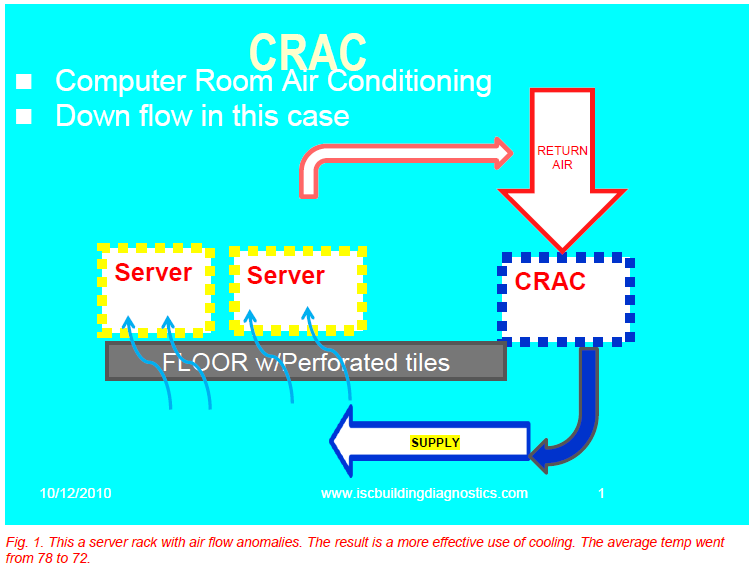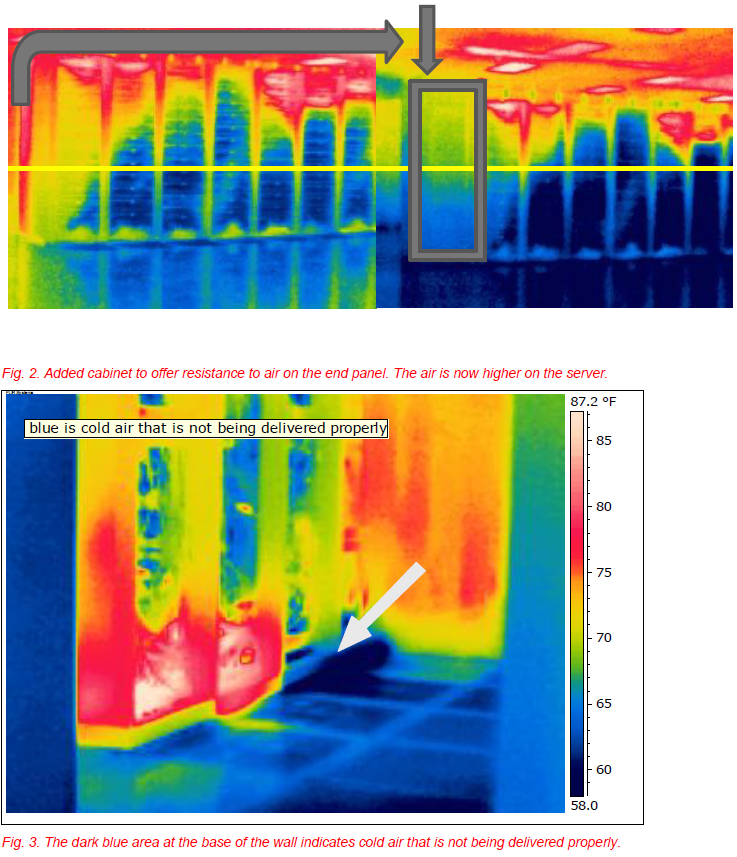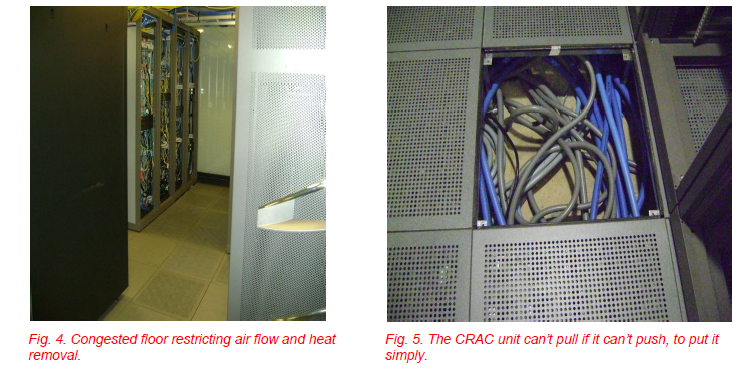“CRAC” (Computer Room Air Condition) the Code
InfraMation 2010 Application Paper Submission
John Cannamela
ISC Building Diagnostics
ABSTRACT
Data rooms have two main concerns: heat and dirt. Both are taken care of by the computer room air conditioning unit (CRAC). CRAC's are of constant concern; they heat, cool, dehumidify, and filter the air. The air distribution is a key factor in how well the heat is removed. Infrared can be a crucial part of the troubleshooting process.
INTRODUCTION
HVAC experience and theory combined with thermal imaging can combine to provide test and balance professionals and HVAC experts with quality information that can be used to identify a number of issues that commonly occur in data rooms. HVAC professionals know that diagnosis of these problems can be an art as much as a science and that any tool that provides information is valuable. Thermography is such a tool, and is very powerful if used correctly. Within its given limitations in HVAC applications, thermography has nearly unlimited potential.
HVAC-CRAC UNITS
The performance of a HVAC-CRAC unit is affected not only by what is going inside the unit, but also by the system with which it is installed. Air flow from the unit is affected by factory settings and by the way in which it is tuned to the environment. This paper will focus on trouble-shooting with thermography.
Scenario: The IT manager says the system is under-sized, but in reality it may not be removing the tonnage required due to factors such as air flow, water flow, refrigerant piping, and filtration. Points to consider: Air is hard to control due to its low density. By control, I mean how heat is transferred to and from a given area. Since air is a low density fluid, it dissipates rapidly upon leaving a controlled containment. Air is forced through duct work or plenum with fans and is then circulated to transfer heat. Areas are designed for certain volume of air. This volume has to be distributed according to demand or load. This is where infrared thermography can be particularly effective in identifying problems. A given area or zone is filled by a quantity of fluid (air). The measurement and adjustment of this quantity is achieved by testing, adjusting, and balancing (TAB). We can accomplish these tasks with special tools such as a flow hood and thermometers, RH, etc. Reading and adjusting flow in a given area will give you proper volume for the load. However, volume and temperature measurements won’t give you effective air distribution.
Testing involves many instruments that measure temperature, volume, and velocity of fluids, including air. Air movement is a necessary requirement in buildings, but where and how it moves is not easy to control after it leaves the ductwork /plenum. We can use smoke to see air flow, but that technique can’t necessarily give us all the information we need in order to determine whether air quality or temperature is affecting comfort.
Infrared thermography allows us to see the effects of the air movement so that we can then direct it to a more beneficial area for comfort or process.
HVAC-CRAC UNIT TESTING PROCEDURE
In order to use infrared thermography to check air distribution, the air needs to be in cooling mode. The system should be at max flow demand.
1) The air should blow for a few minutes to see the effect on a given surface.
2) Air should be read with a velocity measurement tool.
3) IR should then be utilized to see what areas are being affected by the air.
This information will allow the IT manager or engineer to add or place perforated tiles or server racks, etc., as needed.



SUMMARY
Using infrared thermography combined with standard practices and tools saves time during the trouble shooting process which keeps the customer satisfied and on-line.
ACKNOWLEDGEMENTS
The author wishes to thank the Infrared Training Center at FLIR Systems.
ABOUT THE AUTHOR
John Cannamela is a Level II Thermographer, Level II Vibration Analyst, Level I Eddy Current, and a HVAC licensed journeyman